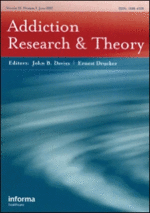Initially born of the desire to prevent the transmission of HIV among injection drug users, harm reduction presents a relatively new option for assisting individuals who struggle with drug and alcohol use. Twelve-step programs such as Alcoholics Anonymous (AA) are widely recognized as being a representative example of abstinence-based treatment and are often seen as oppositional to harm reduction.
The purpose of this study is to examine the ways in which harm reduction workers interpret the relationship between harm reduction and 12-step approaches to treatment.
The study draws upon qualitative interviews with 18 staff members from two harm reduction-based substance use treatment programs.
Two central themes emerge from the qualitative data: (1) harm reduction and 12-step approaches can be complementary; and (2) 12-step approaches in high-threshold treatment settings may differ significantly from their original philosophy and intent. A third, much less prominent theme reflects some respondents' skepticism about the capacity of the two approaches to work together given the resistance to harm reduction by some in the 12-step community.
Complementary conceptualizations of harm reduction and 12-step approaches have the potential to broaden the range of options available to people experiencing substance use problems.
Read Full Abstract
Request Reprint E-Mail:
The purpose of this study is to examine the ways in which harm reduction workers interpret the relationship between harm reduction and 12-step approaches to treatment.
The study draws upon qualitative interviews with 18 staff members from two harm reduction-based substance use treatment programs.
Two central themes emerge from the qualitative data: (1) harm reduction and 12-step approaches can be complementary; and (2) 12-step approaches in high-threshold treatment settings may differ significantly from their original philosophy and intent. A third, much less prominent theme reflects some respondents' skepticism about the capacity of the two approaches to work together given the resistance to harm reduction by some in the 12-step community.
Complementary conceptualizations of harm reduction and 12-step approaches have the potential to broaden the range of options available to people experiencing substance use problems.
Read Full Abstract
Request Reprint E-Mail:



























